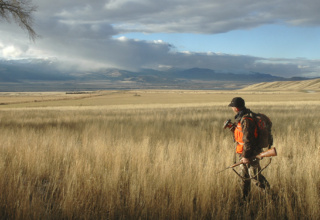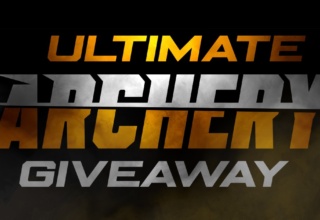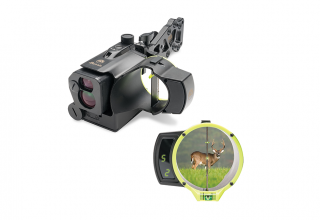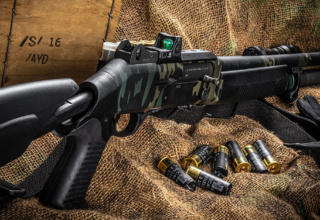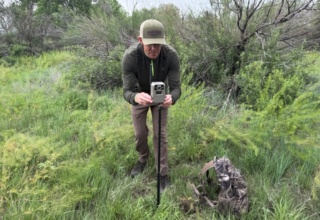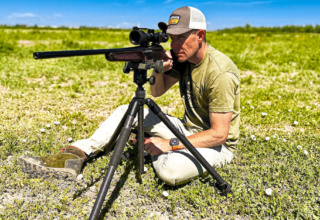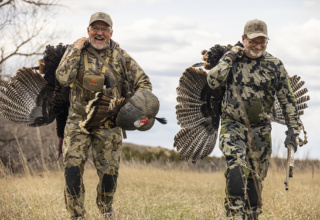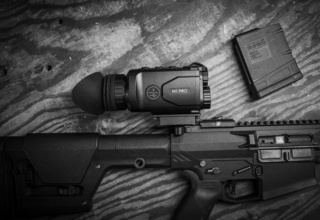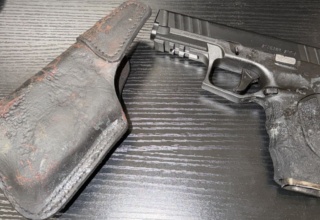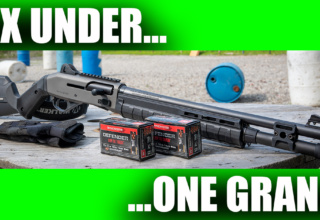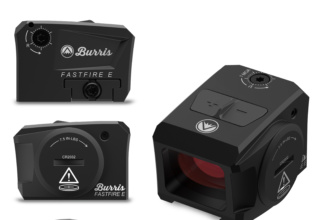Strategic use of deer scents can turn the odds in your favor but the way those scents are delivered to a deer’s nose can further enhance their effectiveness. Here’s what you need to know…
by Rob Reaser
We all know that deer scents can make a big difference in our hunting success, from bringing a deer that’s cruising the edge of our shooting area to pinning him to a spot long enough to take a solid shot. What we don’t hear as much about are scent deployment methods—the devices used to transfer that scent from the bottle to the deer’s nose.
A lot of hunters take the easy route by simply stuffing a bottle of lure in their pocket and applying its contents around their stand. That can work in some situations, but it is not the most effective method. Scent should be dispersed as widely as possible to attract deer that may be quite a way off and, depending on the time of ear and your setup, regularly deliver fresh scent when you are not on the stand. Fortunately, there are several methods for accomplishing this.
Wicking
Wicking is the most common way of dispersing scent, and it is the simplest method. Wicks can be made of any unscented, absorbent material that will soak up and hold liquid or aerosol lure.
The fibrous wicking medium sucks up liquid through capillary action to provide an expanded surface area that better distributes scent molecules into the air. Of course, the effectiveness of the wick depends on the medium used. The more fibers in the wick, the better it will draw in liquid scent, hold it longer, and ensure good dispersal.
We’ve used several materials for scent wicks, including cut-up strips of old clothing, dishwashing rags, and even industrial-grade shop towels. By far, the easiest, most convenient, and most effective medium are felt-type wicks designed specifically for this task.
Wildlife Research Center makes several different types of scent wicks that have proven themselves in our hunting setups. All are based on a highly absorbent synthetic fiber wick. The Key-Wick and Magnum Key-Wick are shaped like a key. The long end is proportioned so it can be inserted into a bottle of lure while the squared back end has a hole cut out so you can hang the wick on a small branch. WRC also makes a Pro-Wick, which uses the same hole-in-one-end hanging method, but the wick is rectangular in shape instead of key-shaped. This provides a larger surface area to hold and disperse more scent than the key-style wicks.
If you decide to give these hanging wicks a try, our suggestion is to keep some small zip baggies in your pocket. When you are ready to pull the wicks, you’ll want something to keep them from smelling up your pack. Keeping them stored individually also allows you to use them again at different locations without getting your fingers stinky. Even if you don’t intend to reuse your wicks, you need something to store them in and take them back home for disposal. Leaving wicks hanging in trees after you’re done with them is just poor form.
An even simpler, less messy alternative—and the one we use almost exclusively—is the Quik-Wik, also made by WRC. These are small, plastic bottles with a wick inside them. The back of the bottle has a split ring that allows you to hang it on a branch, suspended upside down so that the wick hangs out in the air. What we like about these is that when you’re done, simply pull the Quik-Wik from the branch, allow the wick to drop back inside the bottle, and screw on the attached cap. This keeps the scent from getting on you or your gear. Just toss it in your pocket or pack and it’s ready for the next deployment.
Dragging
Scent-dragging is a proven but not-so-commonly practiced method of drawing deer to your stand. Think “bloodhound trailing” and you’ll get the idea. The concept is to literally drag a scent-infused wick across the ground with the intention of making a scent line that will grab a deer’s attention and draw it straight to your stand. Although this is an effective scent deployment method from early in the season until the season closes, it is particularly effective during the rut phase, when bucks are intently searching out breedable does.
Here are a few techniques to consider when dragging scent:
1 – If you intend to cross a deer travel route to get to your stand, or if your plan is to pull a buck off a nearby travel route, be sure to drag from the trail to your stand. If you start dragging too far beyond the trail (the side away from your stand), the buck may go in the opposite direction. Also, if you begin the drag too far on the opposite side of the travel route, the scent will diminish the closer you get to your stand. Thus, if the scent trail is stronger on the far/beginning side of your drag line than it is at the near/ending side (nearest your stand), it is possible that the buck will go in the opposite direction you intend.
To prevent this, dragging from your stand to the travel route is a sound strategy. This way, the scent will be stronger the closer a buck gets to your stand. That may keep up his interest more than a fading scent trail.
2) Most hunters who drag secure a four- or five-foot line to their drag quick with a metal clip or carabiner and tie the other end to their belt. This is the easy-walk method because your hands stay free to carry your weapon or other gear. If you do this, make sure your boots are totally scent-free because a deer will have its nose focused exactly where you stepped.
3) A better alternative is to tie your drag line to a three-foot stick (or an un-tipped arrow) and hold the stick out to your side as you walk. This provides some separation of any scent you may lay down while the lure is being dragged, making it less likely that a deer will get a whiff of you.
4) As you drag to or from your stand, always be aware of shot clearance. For example, you don’t want to drag scent that will place it an area where you do not have an open shot.
5) Another trick, assuming you have a fairly open shooting area, such as at a field edge or in woods with little understory, is to drag the scent in a figure eight pattern that encompasses your shooting zone. As experienced bowhunters know, shot angle is just as important as shot distance. By laying scent in a figure eight pattern, a nose-down buck that’s following your scent trail may give you better and more shot opportunities than a deer that is following a straight scent line.
6) During the rut, one tactic that can really get a resident buck excited is to lay down a dual scent drag. In other words, you can simultaneously drag a doe estrus scent, such as Special Golden Estrus or Estrus Gold, and a buck scent like Golden Buck. This combination can give a resident buck the impression that an interloper is hot on the trail of one of his does and bring him in with an attitude. For this technique, WRC’s Pro-Drag is ideal. This large, seven-inch wick features two tails, allowing you to dip one in buck scent and the other in doe scent. For times when you only want to drag one scent, the twin tails of the Pro-Drag can be used to apply the scent with double the coverage.
Dripping
The final scent delivery method you want to consider is dripping. As with wicking and dragging, dripping works throughout the season, but is particularly effective for working scrapes during the pre-rut and rut phases.
Scrapes are the focal point for deer communication, and especially so during the rut. Bucks establish their scrapes below lick branches early in the season and usually check them with increasing frequency leading up to the rut to help them identify does and other bucks in the area. Hunting over stablished scrapes is one of the deer hunter’s most effective strategies, and one that can be made even more effective by dosing a scrape with fresh and frequent applications of estrus doe scent. For that, nothing beats WRC’s Magnum Scrape Dripper.
The Magnum Scrape Dripper is an ingenious delivery system that you hang from a branch above a scrape after filling it with the scent of your choice. It is designed to slowly drip scent during the daytime as rising temperatures increase air pressure inside the bottle. When the temperature cools in the evening and overnight, the pressure drops and no scent is dispersed. This, of course, is exactly what you want because it encourages bucks to visit the scrape during daylight hours when the fresh scent is deposited.
While drippers work well on individual scrapes, we like to employ two or three along an active scrape line to give our hunting area an added shot of excitement. Combine this with scent dragging along the scrape line leading to your stand and you’ll really have something going on.
One word of caution when deploying scent—especially when using a drag line—is to make sure that you and your clothing are as scent-free as possible. The whole point of scents is to entice a buck to sniff his way toward you. That means his nose will be highly engaged, and the last thing you want is for him to get a whiff of you and spoil the setup.
And Finally…
We like to use head-to-toe scent-free personal care products combined with thorough washing of our clothing in scent-free or autumn-scented laundry products before every hunt and when setting up scent stations. Also, special attention must be paid to making boots scent-free when dragging. For this, liberal application of Scent Killer Gold along boot soles and uppers is critical. Finally, always try to wear rubber gloves when handling wicks, drags, and drippers. That will keep the mess off you and ensure you don’t transfer your scent to the very spot deer will be keying in on.
Scents can be among the most useful tools in the whitetail hunter’s arsenal, but how they are delivered can be just as important. To make the most of your time and investment, try using the dispersal systems we’ve discussed here. They’ll certainly do better than sprinkling some scent willy-nilly around your stand.







